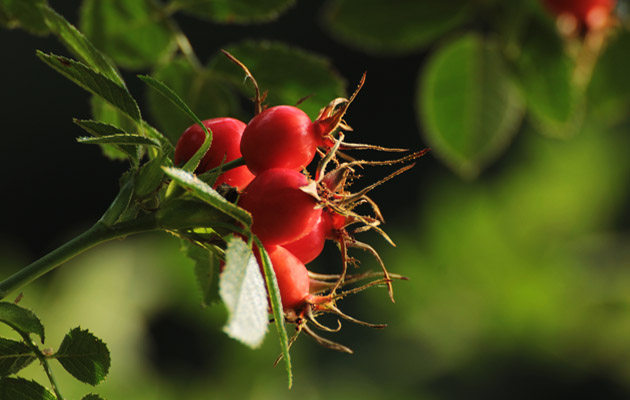10 tips on how to forage this autumn
Foraging is more popular then ever – Hetty Chidwick squares up to the squirrels and shares some top tips for getting started


With some of the most exclusive country house hotels running courses with Michelin starred chefs, foraging is hipper than ever. Food miles are negligible and finding new ingredients to cook in autumn can be a new adventure.
To this end. Friends of the Earth have come up with their own top tips on how and where to forage so you can create some new delicious and creative recipes using what nature has to offer at this time of year.
Get a good guide book for the best things to forage and when. Food for Free by Richard Mabey is particularly good for beginners. A good illustrated guide to wild plants is also invaluable.
Top tips for foraging
1. Get stuck in
Only once you've reached the end of this page, of course. But it's so important that we've put it top of the list: it's a great joy so get out there and do it.
2. Beware when foraging for mushrooms
Only expert foragers are able to tell the difference between delicious mushrooms for cooking with, and some with the potential to make you very ill. So unless you're with an experienced mushroom forager, or take them to someone to check before you cook them, steer away from picking mushrooms.
3. Check and double check before you pick
If in doubt, leave it out! Start your foraging adventures with safe plants you can definitely recognise, like dandelions.
4. Leave plenty for the existing inhabitants
Especially in the winter.
Sign up for the Country Life Newsletter
Exquisite houses, the beauty of Nature, and how to get the most from your life, straight to your inbox.
5. Rosehips are a tasty treat
They're packed with vitamin C to stave off those wintery coughs and colds - they make ideal tea, sauces and jellies.
6. Learn from squirrels
Hunt down some delicious sweet chestnuts. In collecting these and almost any other nut at this time of year you'll probably find they're a determined opponent. But don't let some opposition put you off - a good haul of chestnuts can frequently be found in the unlikeliest of places.
7. Reconsider ‘weeds'
Yes, we might think the stinging nettle is foe rather than friend, but eating them is the best revenge on stinging nettles. Stems and leaves can be eaten, and boiling them neutralises their stings. High in iron, they make a great spinach substitute but go for the young tips rather than the monster specimens.
8. Odd name doesn't equal odd flavour
Some plants might sound outlandish, but the taste of Jack-by-the-Hedge, for example, definitely isn't - eat the heart shaped leaves raw to bring a mild garlic flavour to any salad. They are also superb with soft goat's cheese.
9. Foraging cuts your weekly food spend
This part of the year is a bumper time for apples , and January is a great month for Chickweed, which is a great alternative to salad at a time when it's generally air-freighted and extortionately priced in the shops.
10. Ask permission
Essential if you're foraging on private land.
Friends of the Earth's Executive Director Andy Atkins said: ‘October is a great month to discover foraging - when apples are, literally, nature's windfall - whilst November is a superb time to harvest sweet chestnuts for roasting.
Keen to turn your spoils into some delicious recipes? Try some of Country Life's recipes:
* Sloe Gin Recipe * Nettle beer recipe * Top autumn recipes * Rowan jelly recipe
Hetty Lintell masterminded the launch of the magazine’s Luxury pages back in 2012 and has overseen them ever since. She also edits Gentleman's Life, Country Life’s annual men’s lifestyle supplement, and styles and art-directs all of the magazine's fashion and still-life shoots. Her real forté, however, is compiling top-notch goodie bags for any party the magazine hosts. The best-dressed member of the team, Hetty can normally be found darting between Bond Street and a photographic studio in East London.
-
 A rare opportunity to own one a family home on Vanbrugh Terrace, one of London's finest streets
A rare opportunity to own one a family home on Vanbrugh Terrace, one of London's finest streetsThis six-bedroom Victorian home sits right on the start line of the London Marathon, with easy access to Blackheath and Greenwich Park
By James Fisher
-
 Materials, textures, construction, expression: A Brutalist watch on your wrist
Materials, textures, construction, expression: A Brutalist watch on your wristLuxury watchmakers are seeking to bridge the gap between two contrasting styles, with exciting results.
By Chris Hall